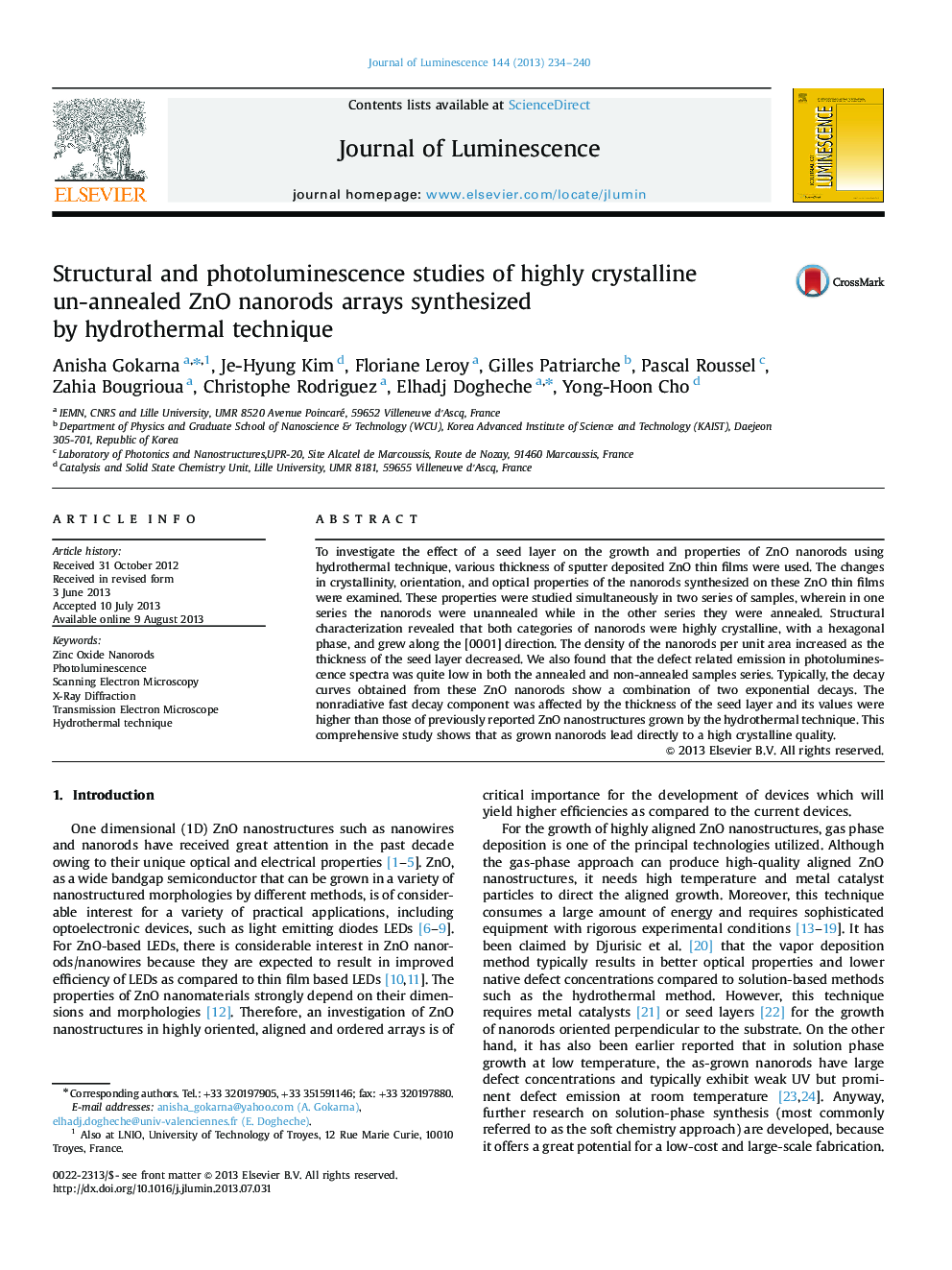| Article ID | Journal | Published Year | Pages | File Type |
|---|---|---|---|---|
| 5400626 | Journal of Luminescence | 2013 | 7 Pages |
Abstract
To investigate the effect of a seed layer on the growth and properties of ZnO nanorods using hydrothermal technique, various thickness of sputter deposited ZnO thin films were used. The changes in crystallinity, orientation, and optical properties of the nanorods synthesized on these ZnO thin films were examined. These properties were studied simultaneously in two series of samples, wherein in one series the nanorods were unannealed while in the other series they were annealed. Structural characterization revealed that both categories of nanorods were highly crystalline, with a hexagonal phase, and grew along the [0001] direction. The density of the nanorods per unit area increased as the thickness of the seed layer decreased. We also found that the defect related emission in photoluminescence spectra was quite low in both the annealed and non-annealed samples series. Typically, the decay curves obtained from these ZnO nanorods show a combination of two exponential decays. The nonradiative fast decay component was affected by the thickness of the seed layer and its values were higher than those of previously reported ZnO nanostructures grown by the hydrothermal technique. This comprehensive study shows that as grown nanorods lead directly to a high crystalline quality.
Keywords
Related Topics
Physical Sciences and Engineering
Chemistry
Physical and Theoretical Chemistry
Authors
Anisha Gokarna, Je-Hyung Kim, Floriane Leroy, Gilles Patriarche, Pascal Roussel, Zahia Bougrioua, Christophe Rodriguez, Elhadj Dogheche, Yong-Hoon Cho,
